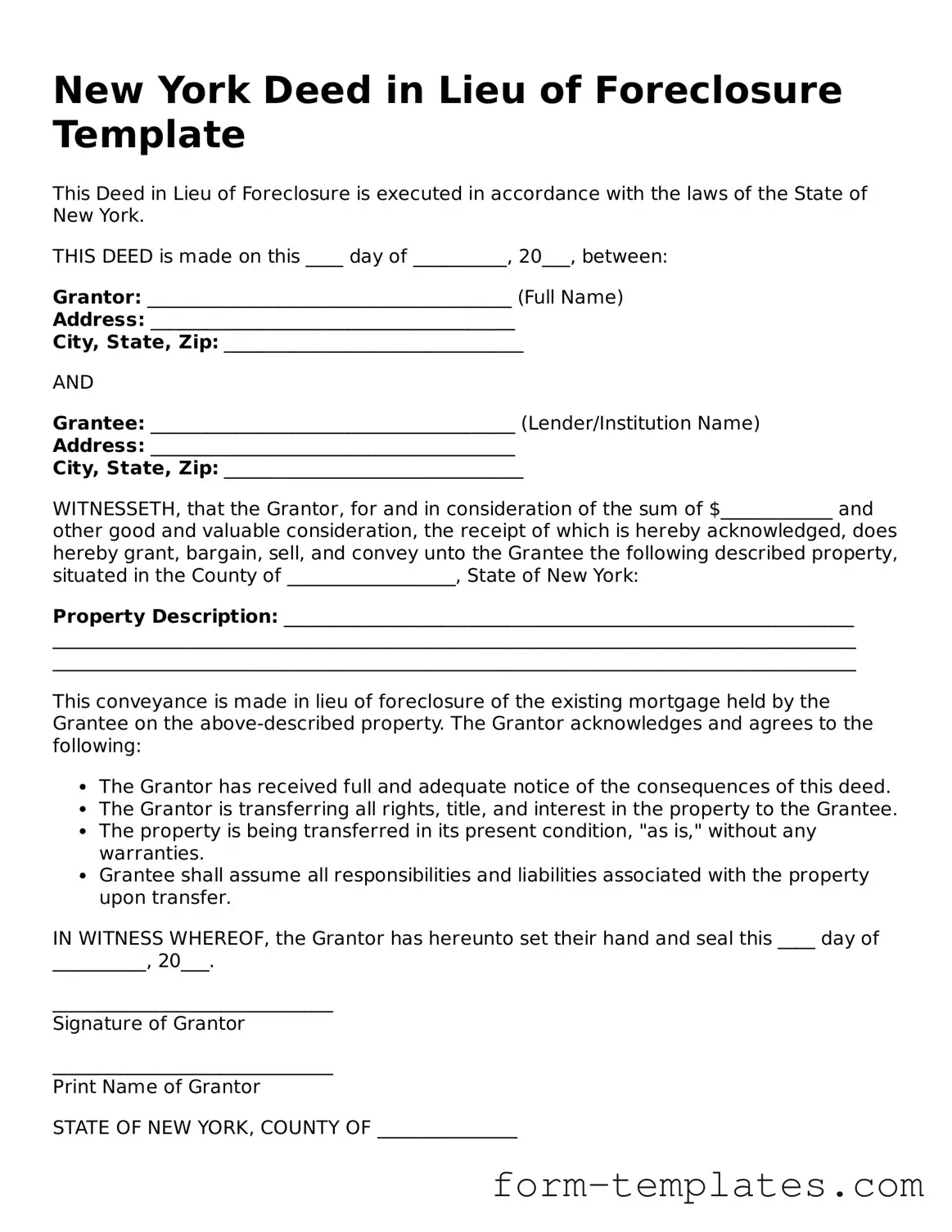New York Deed in Lieu of Foreclosure Template
This Deed in Lieu of Foreclosure is executed in accordance with the laws of the State of New York.
THIS DEED is made on this ____ day of __________, 20___, between:
Grantor: _______________________________________ (Full Name)
Address: _______________________________________
City, State, Zip: ________________________________
AND
Grantee: _______________________________________ (Lender/Institution Name)
Address: _______________________________________
City, State, Zip: ________________________________
WITNESSETH, that the Grantor, for and in consideration of the sum of $____________ and other good and valuable consideration, the receipt of which is hereby acknowledged, does hereby grant, bargain, sell, and convey unto the Grantee the following described property, situated in the County of __________________, State of New York:
Property Description: _____________________________________________________________
______________________________________________________________________________________
______________________________________________________________________________________
This conveyance is made in lieu of foreclosure of the existing mortgage held by the Grantee on the above-described property. The Grantor acknowledges and agrees to the following:
- The Grantor has received full and adequate notice of the consequences of this deed.
- The Grantor is transferring all rights, title, and interest in the property to the Grantee.
- The property is being transferred in its present condition, "as is," without any warranties.
- Grantee shall assume all responsibilities and liabilities associated with the property upon transfer.
IN WITNESS WHEREOF, the Grantor has hereunto set their hand and seal this ____ day of __________, 20___.
______________________________
Signature of Grantor
______________________________
Print Name of Grantor
STATE OF NEW YORK, COUNTY OF _______________
On this ____ day of __________, 20___, before me, a Notary Public in and for said State, personally appeared ______________________________, known to me (or proved to me on the basis of satisfactory evidence) to be the person(s) whose name(s) is(are) subscribed to the within instrument, and acknowledged to me that they executed the same.
______________________________
Notary Public
